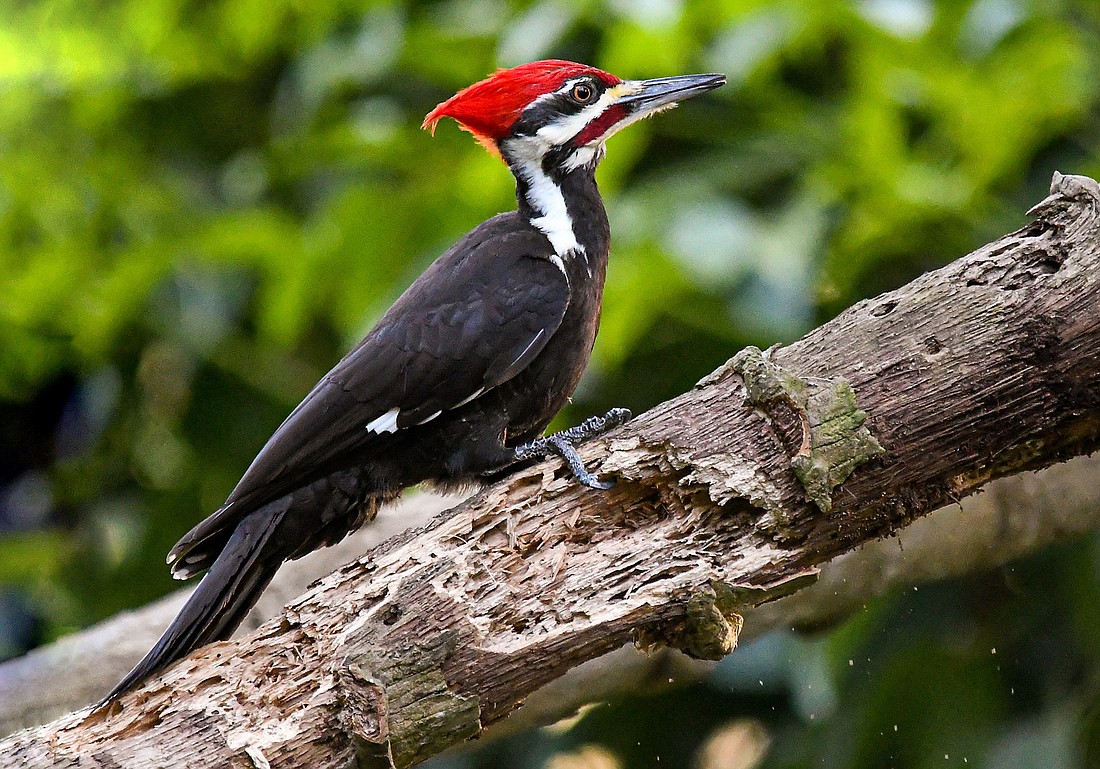- July 11, 2025
-
-
Loading

Loading

Rhythmically drumming on trees, whether to forage or to broadcast territory and attract mates, pileated woodpeckers are often heard before seen.
Named for their jaunty red crests (“pileatus” means "capped” in latin), they are the largest woodpecker in North America (since the extinction of ivory-billed woodpeckers in the 1940s, due to habitat loss).
They use their powerful beaks to chisel out large, square holes in soft, dead wood, then extract wood-boring insects such as carpenter ants, with their long, barbed tongues. Pileated woodpeckers also use their beaks to excavate large nesting and roosting cavities in dead trees.
As they excavate new cavities yearly, their abandoned homes become coveted nests for birds such as eastern screech owls, American kestrels and wood ducks, as well as such mammals as bats, squirrels and raccoons, who can't excavate their own tree cavities.
Pileated woodpeckers are therefore considered a keystone species, as the well-being and survival of many other species depends upon them.
Habitats that support healthy populations of woodpeckers have large dead and dying standing trees, known as snags, which are abundant in mature forests. Snags may occur due to many reasons, including disease, lightning, or simply old age.
With the loss of many of our forests, due to development, it is becoming difficult for the sizable pileated woodpeckers to find suitable nesting trees, which, in turn, could affect many more species.
Many dead or dying trees can safely be left in place, thus providing our wildlife with foraging and nesting opportunities. By making an effort to keep snags in our backyards and public spaces, we can help protect our native species, for generations to come.
Save our Seabirds is a non-profit organization whose mission is to rescue and rehabilitate sick and injured birds, releasing as many as they can, while educating our community about avoiding injuries and preserving habitats.